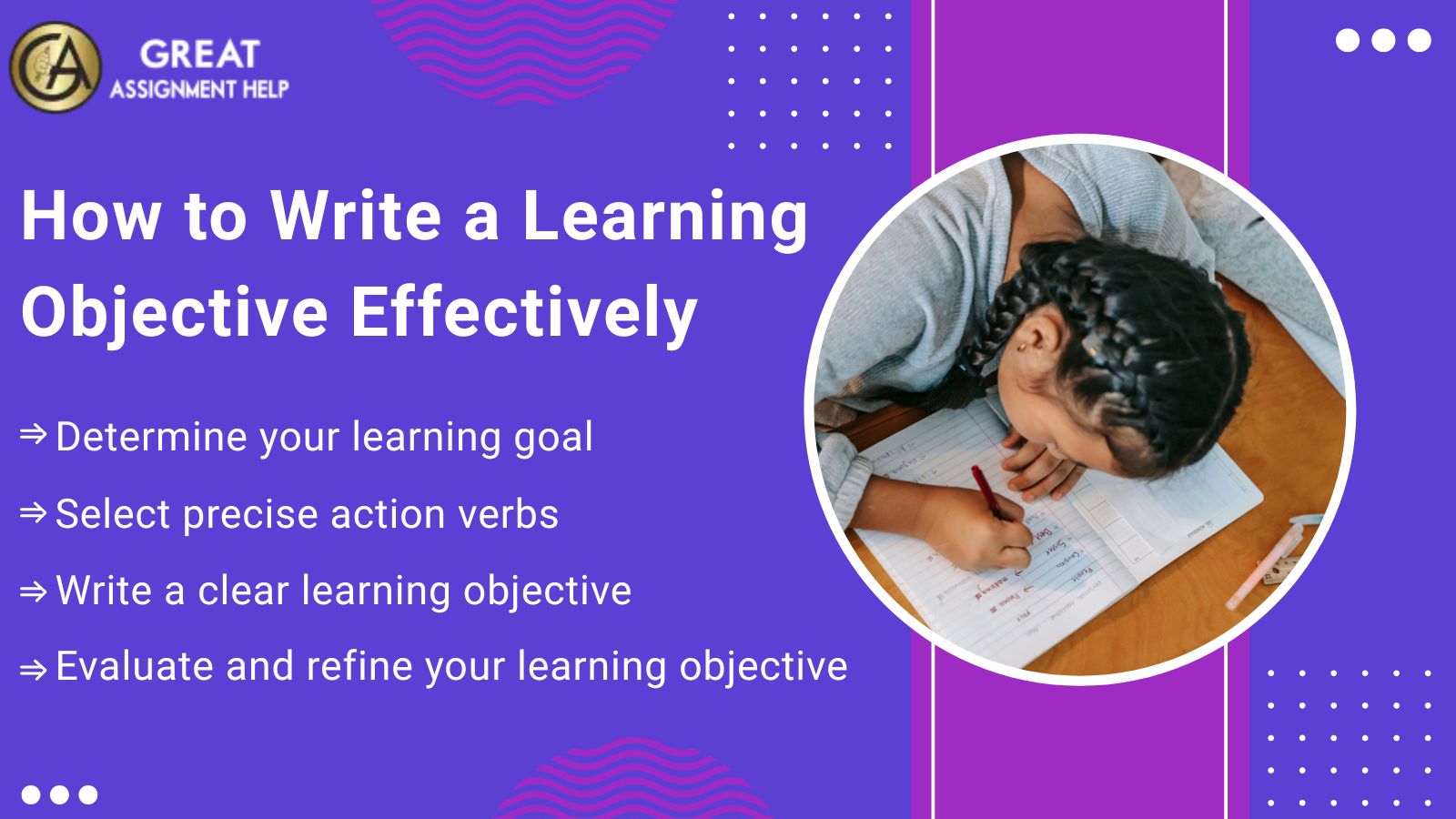To create a successful learning experience, you must know how to write learning objectives. This involves setting clear and specific goals that outline what you want to achieve. By setting specific and measurable objectives, you can track progress and stay focused. This makes learning more effective and fun.
Typically, learning objectives will act like a roadmap for lessons, tests, and other educational activities. So, it will be helpful for teachers, trainers, and instructional designers. Especially when the learning objectives are clear, both instructors and learners can stay on track and understand what needs to be achieved. Moreover, proper learning goals will also make it easier for the teachers to plan lessons, measure progress, and know if students are meeting the goals. If you are an instructor who wishes to know more about learning objectives and their types, then read this guide. Here, we have shared insights on how to write learning objectives with examples and the skills needed to create them effectively.
What are Learning Objectives?
Learning objectives are clear statements that explain what learners should know or be able to do by the end of a lesson or training. You can use these objectives in schools, workplaces, and other learning environments to keep your instruction focused and effective.
The main purpose of learning objectives is to
- Communicate what learners are expected to achieve in terms of knowledge, skills, or attitudes.
- Provide specific criteria that help instructors assess learner performance.
- Set clear expectations by using action words that describe what learners will do.
The learning objectives are beneficial in several ways. Particularly, with the help of learning objectives
- Instructional designers can plan lessons, choose content, and design activities
- Teachers can measure progressmore accurately by comparing learner performance
- Learners can gain a better understanding of what is expected of them and how to track their progress.
What are the Different Types of Learning Objectives?
Learning objectives are not all the same. The kind of goal you set depends on what you want your students to learn. Typically, learning objectives are classified into three types. Each type of learning objective will support a different part of the student’s development. But together, they will help you create a more complete and balanced learning experience for the students.
Here, let us get to know about the various learning objective types with examples
Cognitive Objectives
These goals are all about the students’ brainpower. They focus on learning facts, understanding ideas, and solving problems.
Example:
“By the end of the lesson, students will be able to compare the climates of different regions.”
In this case, your students will not only memorize weather facts but will also learn how to spot differences and explain them. Words like compare, describe, or analyze are common in cognitive goals.
Affective Objectives
These objectives are about emotions, values, and social skills. They will help your students learn how to behave kindly, work with others, and grow emotionally.
Example
“Students will show respect by listening when classmates are speaking.”
This type of goal will teach the students how to be thoughtful and respectful. It is about helping them become good citizens and kind classmates. The affective objective is as important as getting good grades.
Psychomotor Objectives
These goals focus on physical actions like writing, drawing, or playing a sport. They will mainly help your students build coordination and hands-on abilities.
Example
“By the end of the lesson, students will be able to use scissors to cut out basic shapes.”
Learning to perform something with their hands, like writing or using scissors, is what this objective is all about. It will help your students improve their hand control and focus while learning through action. This objective deals with learning by doing and not simply by thinking.
How to Write a Learning Objective Effectively

Writing learning objectives is a crucial skill that will help you create focused educational activities and measurable learner outcomes. If you wish to craft well-defined learning objectives, then follow these steps:
1. Determine your learning goal
First, start by identifying the overall learning goal you want to achieve. While determining the goal, you should think about the specific skill, knowledge, or behavior you want your learners to acquire.
2. Select precise action verbs
After you find out the learning goal, choose action verbs that accurately describe observable behaviors and performance. You can use verbs that match the cognitive level of Bloom’s Taxonomy, such as remember, understand, apply, analyze, evaluate, or create.
3. Write a clear learning objective
Next, develop a learning objective statement that describes how learners will achieve the goal. When composing this statement, you should make sure to clearly describe the specific actions or behaviors that learners will demonstrate.
4. Evaluate and refine your learning objective
Finally, assess your learning objective statement to make sure it is SMART (Specific, Measurable, Achievable, Relevant, and Time Bound). You should also refine the statement to match your main learning goal and ensure it clearly shows the exact skills or knowledge you want your learners to show.
How to Write Learning Objectives Using Bloom’s Taxonomy
Bloom’s Taxonomy is a helpful tool that educators and instructional designers use to plan clear and focused learning goals. It will help you break down learning into different levels, from simple to more complex thinking. Furthermore, with Bloom’s Taxonomy, you can choose the right kind of task or skill based on how deeply you want learners to understand something. It typically gives structure to your teaching.
Bloom’s Taxonomy is a hierarchical framework that has six levels. Each level shows a different kind of thinking skill, starting with basic knowledge and moving up to creative thinking.
- Remember: recalling facts or basic information
- Understand: explaining ideas or concepts
- Apply: using knowledge in real-life situations
- Analyze: breaking information into parts to understand it better
- Evaluate: making judgments based on criteria
- Create: building something new or original
If you want to create a learning objective as per Bloom’s Taxonomy, then follow these steps
- Decide how deeply you want learners to understand the topic.
- Pick a verb that matches the level (e.g., list, explain, use, analyze, judge, design).
- Write a clear, specific learning objective using that verb.
- Check if the objective is measurable and realistic.
Examples of Learning Objectives
Learning objectives are useful in many different settings, from schools and workplaces to community programs. Here are some simple examples from a variety of learning environments:
College: Computer Programming
Students will build a working video game using Python and the Pygame library after completing 8 weeks of lessons.
Workplace: Project Management Training
Employees will make a project timeline using a Gantt chart and set important deadlines.
Health Education: Community Wellness
Participants will learn three ways to manage stress and practice them during weekly classes.
Non-Profit: Volunteer Training
Volunteers will use good communication skills to connect with people during outreach events.
Wrapping Up
By now, you will have gained a good understanding of learning objectives. If you want to create a well-structured learning objective, then follow the steps suggested in this blog. In case you are still unsure how to write learning objectives, utilize our online assignment help services. As per your requirements, the academic experts from our team will assist you in creating an excellent learning objective.



